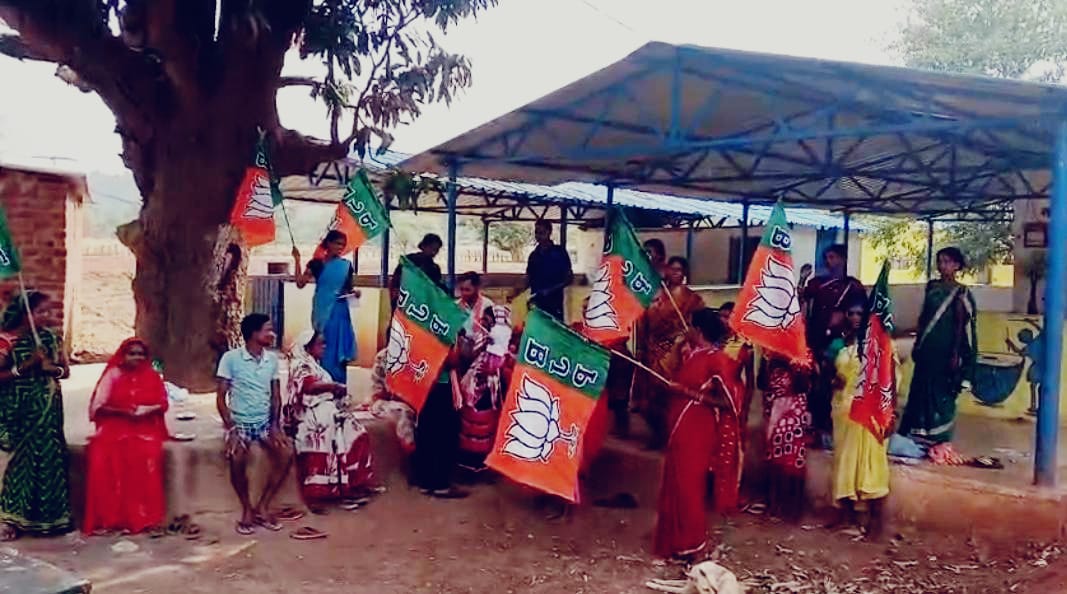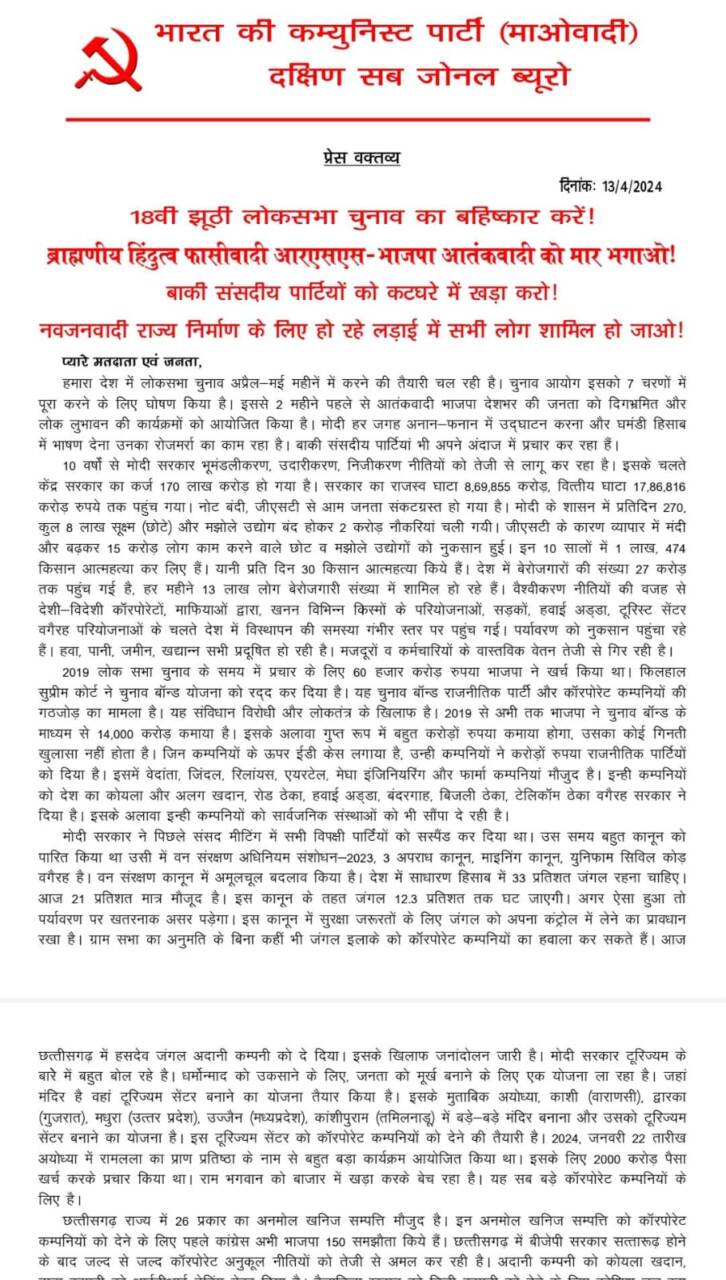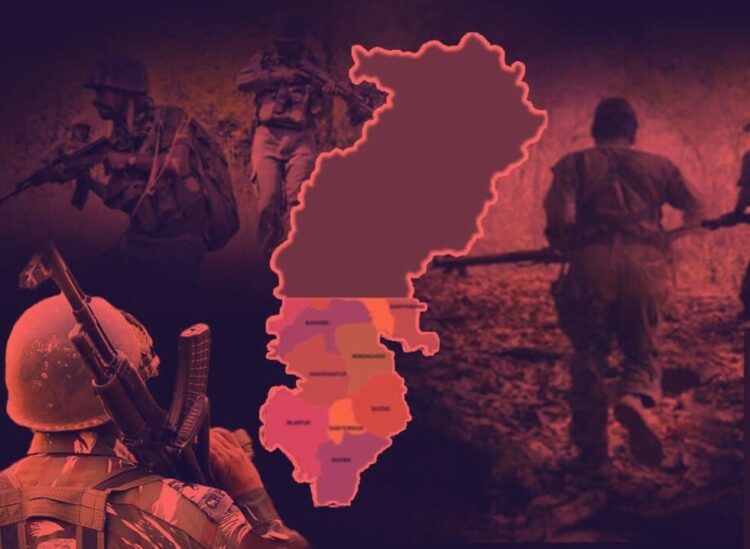The Maoist-infested Lok Sabha constituency of Chhattisgarh, which has recently witnessed a fierce electoral battle mainly between the Bhartiya Janata Party (BJP) and the Indian National Congress (INC) candidates, had a significant turnout of voters on Friday, April 19.
According to the reports, the Maoist-affected constituency has once again registered a rise in voter turnout as around as 2 percent more voters have casted their votes in the recently concluded polls than in the last Lok Sabha elections.
As per the statistics available, the constituency has registered a turnout of around 68 per cent of voters a slight rise from the 2019 Lok Sabha polls where a turnout of 66.19 was registered suggesting the augmenting faith of the people in the democratic process of the largest democracy of the world.
Significantly, residents of as many as 56 villages have cast their votes in the polling stations of their own villages for the first time since independence. This includes voting on polling booths opened for the first time in the remote regions of Odisha border and a number of villages in Dantewada, Narayanpur and Sukma earlier considered as bastion for Maoist.
Consistent rise in voting percentage
It is noteworthy, that despite the continuous calls of boycotting elections by the outlawed Communist Party of India Maoist (CPI Maoist), the Bastar Lok Sabha constituency has registered a continuous rise in voting percentage over the years even between the Lok Sabha elections held in 2004 and 2009 when the Maoist insurgency was at its peak.

According to the reports, the voting percentage of the constituency in 2004 was only 43.33 per cent which witnessed a rise of 4 per cent in the Lok Sabha elections of 2019 where the voting percentage was 47.34 per cent. The constituency witnessed a significant rise in voting percentage in 2014, when it registered a voter turnout of around 59 per cent, an overall rise of 12 per cent than the previous elections. Further there was a 7 percent rise in the Lok Sabha elections held in the year 2019 when around 66.19 per cent of voters cast their votes in the Maoist stronghold.
Boycotting of elections
It should be noted that boycotting the elections and interrupting the democratic process through the means of violence have always been part and parcel of the Maoist agenda in Bastar, which earlier used to run their autocratic parallel governments at their peak.
The ultras have not only time and again carried out incident of violence to disrupt the elections but they also issues decrees ordering the civilians to boycott the elections or to bear the consequences if they opts to defy the orders.
Recently, in a press release issued by the Dakshin (South) Sub Zonal Bureau of the banned CPI Maoist, the extremists also gave a call to boycott the upcoming Lok Sabha elections. The Maoist in the press release had once again asserted that the people should hit-back the BJP, RSS workers, alongside boycotting the elections in general citing alleged corporatisation.

The press release was issued amidst the cadre of the banned outfit killed another political representative in Narayanpur district of Chhattisgarh on April 16. The responsibility of the attack was later claimed by the Purva (East) Bastar Division Committee of the outlawed CPI Maoist.
The incident occurred when BJP leader and Upsarpanch (sub- village head), Pancham Das was brutally hacked to death by the members of the Small Action Team (SAT) in Dandwan village under Farasgaon police station limits of Narayanpur. The deceased was an active party worker of the BJP and was campaigning for the BJP candidate from the Bastar Lok Sabha seat until recently.
Tribal issue
The Bastar Lok Sabha constituency is a reserved seat for the Scheduled Tribes (ST) which constitutes a decisive majority in the elections. Moreover, the Lok Sabha constituency also includes of 3 ST reserved seats out of the total of 8 State assembly constituencies, where issues pertaining to development along with protecting the age-old traditions of the tribal populations have always been at the centre of elections.
Significantly, despite of the constant pressure of the Maoist, the tribal dominated population of Bastar in recent years has shown that they align happily with the concept of development rather than chasing the distant dream of a violent ideology that is alien to them naturally. Their resolve has also been reflected in their voting patterns of recent years.
It is noteworthy, that the Maoist have time and again claimed that the violence unleashed by them is dedicated solely to safeguarding the interest and rights of the tribal population residing in the remote terrain of Bastar.
However, contrary to their claims, the augmenting voting percentage in the tribal reserved seat of Bastar vividly reflects that the faith of the people of tribal dominated Bastar in the democratic process of the world’s largest democracy is amplifying with each passing election.



















Comments